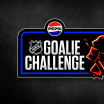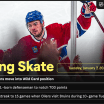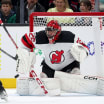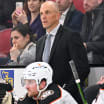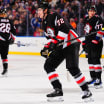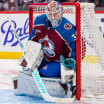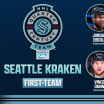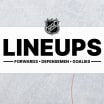Goalie interference discussed at GM meetings, process working well
Reviews may be refined, will always be gray area
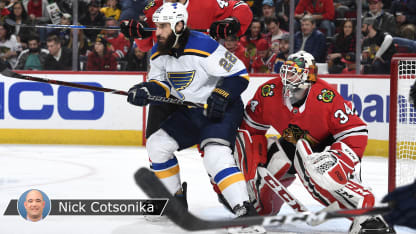
They looked at 14 video clips of coach's challenges. Afterward, reporters were invited to watch five of the same clips on the same screens in the same hotel ballroom. Asked to vote "goal" or "no goal," sometimes the room was split.
"Clear as mud," senior vice president of hockey operations Kris King said.
RELATED: [GMs discuss coach's challenge for goalie interference at meetings]
The takeaway from the exercise: As much as everyone wants clarity and consistency, goaltender interference is not black and white. It's subjective. When it comes to the most controversial calls, reasonable people disagree.
We tend to focus on those incidents and lose perspective on the bigger picture.
When the GMs voted at these meetings in March 2015 to recommend the coach's challenge for goaltender interference, Commissioner Gary Bettman said: "You're not going to get complete satisfaction on a judgment call. There can only be differences of opinion."
The idea was that while there could be no "right call," a referee could make a "better call" with video review and input from the NHL Hockey Operations Department in the Situation Room in Toronto.
"You were never going to satisfy everybody, and that's not the goal," Minnesota Wild GM Chuck Fletcher said. "The goal is to hopefully make the better call and avoid some of the big mistakes that maybe have been made in the past."
For the most part, it has worked.
The average time of video review for goaltender interference -- between when the coach's challenge and result are announced -- has dropped from 2:22 to 2:03 to 1:59 over the past three seasons.
The number of coach's challenges for goaltender interference has risen from 144 to 166 to 170 through 1,100 games this season, and senior executive director of hockey operations Colin Campbell said the officials have gotten too sensitive to contact in the crease watching high-definition, slow-motion replays.
"We got caught searching a little bit," NHL senior vice president and director of officiating supervision Stephen Walkom said.
But out of the 170 coach's challenges for goaltender interference this season, 119 times, the officials confirmed their call. Fifty-one times, the officials changed their call. In other words, 51 times, they made what they felt was the better call.
Nine times, there was some controversy. Six times, there was some disagreement between hockey ops and the officials on whether a goal should have counted, King said. Four times, there was strong disagreement to the point where hockey ops felt the officials should have gone the other way.
"What percentage is that?" Campbell said.
"Minuscule."
In terms of hockey ops and the officials disagreeing on a coach's challenge for goaltender interference, it's between 2.4 percent and 3.5 percent of the time.
"It's not really a problem from our side because for the rest of those, we're seeing the same thing," King said.
Between 96.5 percent and 97.6 percent of the time, most everyone agreed.
"Each one of these plays is uniquely different and needs to be judged independently, and that's probably the hard part about this," Walkom said. "But when you think about the number that get judged in a game and through video review, it's amazing that we're really down to just a small number that we need to make sure that our compass is right on.
"Not saying we're perfect, either. We have made some mistakes this year, and we hope to correct them in season."
The NHL already has made an effort to get everyone on the same page.
For three years, each NHL official has received a video of each challenge, so he can see what was called and why. About three weeks ago, each GM and coach started receiving a video of each challenge too.
The League has a small group giving input to the officials on the reviews -- about five people in hockey ops -- and a six-man crew of former officials in the Situation Room during the Stanley Cup Playoffs. King was the only person who spoke to officials on reviews in the playoffs last year for the sake of consistency.
Opinions on what more should be done about the calls vary like the opinions on the calls.
"There's lots of ideas," Winnipeg Jets GM Kevin Cheveldayoff said. "Is everyone consistent in their own ideas on how you can achieve that level of consistency? That's why you have this kind of discussion."
Campbell said there was talk of releasing explanatory videos publicly, as the Department of Player Safety does with suspensions. Would it help to have active or former officials in the situation room during the regular season? Would removing the call from the officials on the ice help, or would it just shift blame to the Situation Room?
"It wouldn't really matter, I don't think, who had the final say," Walkom said. "I don't know if that's relevant. I think we'd still have plays like we're talking about today. We would still have five or six plays that are debatable, that maybe half the GMs agree with, half of them don't."
The process can be refined. But unless the NHL goes back to the black-and-white, foot-in-the-crease rule, some plays will always be clear as mud. That's as clear as day.
"This has played out probably the way a lot of people thought, that there's always going to be some disagreement, because again, it's a judgment call," Fletcher said. "But we're getting the vast majority, if not almost all of these, right. There's going to be some that are always going to be a little bit more controversial, and we're just going to have to live with that."
